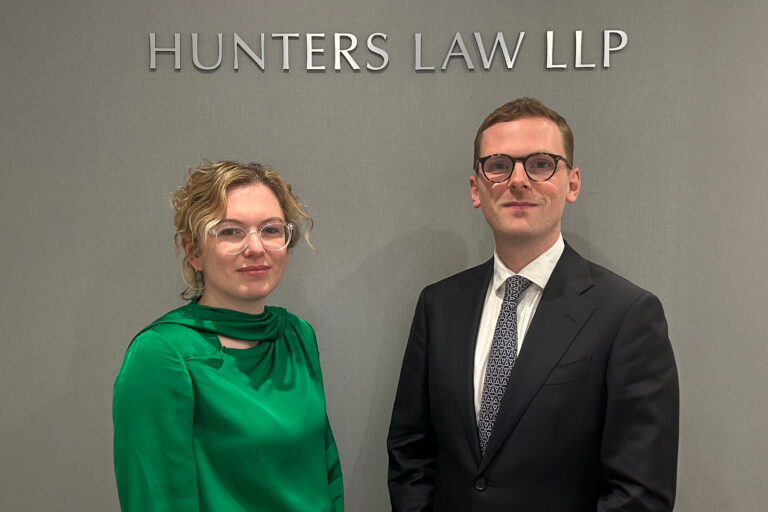Polly Atkins examines the family justice system from the recent case of LS v PS in The Law Society Gazette

This article was originally published on 25 February 2022 in The Law Society Gazette and can be found here on page 26.
Litigation funding and competing interests
Those practitioners unfamiliar with this area are often surprised that third party litigation funding is now fairly common in family litigation. In recent years, litigation funding has not only become possible in financial cases on divorce, but it has been endorsed as an important part of the family justice system as a means of enabling equality of arms where one party lacks access to funds. Under s22ZA Matrimonial Causes 1973, an application for a Legal Services Order (an order requiring the other party to make funds available for the payment of legal fees) cannot be granted unless the court is satisfied that the applicant is not reasonably able to secure a loan to pay for the services; this has been interpreted as requiring evidence of refusals by two commercial lenders of repute (as set out by e.g. Mostyn J in Rubin v Rubin [2014] EWHC 611 (Fam)).
However, the judgment from the recent case of LS v PS [2021] EWHC 3508 (Fam) has raised a new question about competing policy considerations in the family justice system.
The case involved a litigation funder identified only as Q. Q intervened in financial remedy proceedings, applying to set aside a consent order which gave effect to an agreement reached at a private Financial Dispute Resolution hearing (pFDR) (a privatised form of the court hearing at which a judge / evaluator provides a non-binding indication of the likely outcome in order to assist negotiations). Q alleged that the husband and wife structured their settlement, which provided for the husband to provide a home for the wife under a trust in which she would have a life interest, so as to deliberately prevent the wife from being in a position to repay her debt to Q (amounting to almost £1 million) such that Q was effectively bypassed. The set aside application is listed for a four-day hearing in March.
At an interim hearing Q sought disclosure of, and permission to admit, documents generated in the context of the pFDR in order to present their claim that the agreement was a fraud against them as a creditor under ss423-425 Insolvency Act 1986. The material Q wanted to utilise was all marked without prejudice and subject to without prejudice privilege. Furthermore, the Family Procedure Rules (at para 6.2 of Practice Direction 9A) provide that nothing said, nor any admission made, in the course of an FDR can be admitted in evidence, stating that this protection is vital and is an essential prerequisite for fruitful discussion directed to the settlement of the dispute between the parties.
Clearly this bar to disclosure limits a lender’s ability to adduce evidence which shows how a settlement came about and therefore whether it was fraudulently structured so as to avoid repayment obligations. However, Mrs Justice Roberts held that that under the law as it stood, the material remained privileged from disclosure and therefore could not be adduced at the final hearing. However, the Judge was optimistic that the trial judge of the set aside application would have sufficient evidence to determine matters.
The case grapples with the competing policy considerations engaged by, firstly, the importance of maintaining the confidentiality of the FDR process, and, secondly, a lender’s ability to provide evidence in support of a claim that a consent order should be set aside for fraud. The inability of lenders to adduce such information could act as a deterrent to their participation in the market. Yet the confidentiality of the FDR has, to date, been sacrosanct within the family justice system to maximise the prospects of settlement, and this case demonstrates the high bar that needs to be satisfied in order to supersede that without prejudice label.
However, whilst the decision demonstrates that it is the litigant and not the funder who is in the driving seat of proceedings, this control is subject to protective mechanisms within litigation funding agreements. Practitioners will be aware that funders expect to be able to manage their risks by monitoring the progress of the case and being kept abreast of all developments throughout the proceedings. That is achieved through contractual commitments entered into by the borrowing party and often also undertakings from their solicitor. A breach of the loan agreement by the client can result in the funder ceasing to permit further drawdowns and calling in the loan. By this means, while not party to the proceedings, a funder seeks some measure of control, and it is usual for the instructed solicitor to be required to alert the funder where there have been changes of circumstances which could impact the client’s ability to repay the loan.
The case also serves as a reminder that there are practical considerations for solicitors beyond the restrictions on giving financial advice. In this case, the wife’s solicitor came off the record during the pFDR, presumably due to an actual or perceived conflict. It serves as a reminder to those of us involved with litigation loans to stay alert to the contractual terms and undertakings to which we have agreed, as well as to the potential conflicts of interest that might arise.
The judgment concludes with a footnote in which Mrs Justice Roberts suggests that given the importance of litigation funding to the system the facts of this case might provide a basis for revisiting when, and in what circumstances, that bar might be lifted where a case can be established for justifying the introduction into proceedings of material covered by the FDR privilege. This may suggest a concern to protect the position of the litigation lenders and their role within the family justice system.
It will be interesting for practitioners to see whether these concerns result in changes to the contractual arrangements between funders and our clients, or to the standard undertakings required from solicitors, and whether Mrs Justice Robert’s call to the Family Procedure Rules Committee will be heeded.





